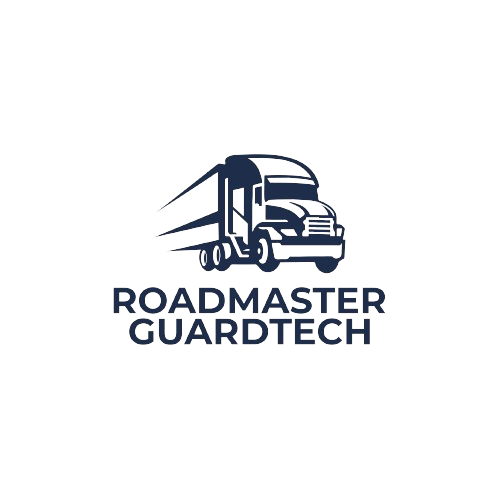
The trucking industry, a vital component of Canada’s economy, is undergoing a significant transformation thanks to the integration of advanced sensor fusion systems and real-time road situation analysis. These technologies are not only improving safety but also driving efficiency across the industry, helping trucking companies navigate the challenges of vast distances, variable weather conditions, and complex road networks.
The Importance of Safety in Trucking
Safety has always been a top priority in the trucking industry. In Canada, where trucks are responsible for moving over 70% of the country’s freight, ensuring the safety of drivers, cargo, and other road users is critical. While effective, traditional safety measures have limitations, especially when dealing with the unpredictability of road conditions and human error. This is where advanced sensor fusion systems and real-time road situation analysis come into play.
What is Sensor Fusion?
Sensor fusion is the process of integrating data from multiple sensors to create a comprehensive understanding of the environment. In the context of trucking, these sensors include cameras, radar, LiDAR, and ultrasonic sensors, among others. By combining the strengths of each sensor type, sensor fusion systems provide a more accurate and reliable picture of the vehicle’s surroundings than any single sensor could achieve on its own.
For instance, while cameras offer high-resolution images, they may struggle in low light or adverse weather conditions. Radar, on the other hand, is less affected by these conditions but lacks the detail provided by cameras. By fusing data from both, the system can overcome the limitations of each sensor and provide a clear, consistent view of the road ahead.
Real-Time Road Situation Analysis
Real-time road situation analysis takes the data provided by sensor fusion systems and processes it to make informed decisions. This involves analyzing current road conditions, traffic patterns, and potential hazards to ensure safe and efficient driving.
For example, in Canada, where winter conditions can drastically affect road safety, real-time analysis can detect ice on the road, reduced visibility due to snow, or sudden weather changes. The system can then alert the driver or, in the case of autonomous or semi-autonomous vehicles, take corrective action to prevent accidents. This capability is particularly crucial in remote areas of Canada, where road maintenance and weather updates may be less frequent.
Enhancing Efficiency Through Technology
In addition to safety, these technologies are also driving efficiency in the trucking industry. By continuously monitoring the environment and making real-time adjustments, sensor fusion, and road situation analysis help optimize fuel consumption, reduce wear and tear on vehicles, and minimize delays caused by traffic or road conditions.
For instance, a truck traveling through the Rocky Mountains in British Columbia might encounter sudden fog or rain. The sensor fusion system detects the change in conditions, while the real-time analysis system adjusts the speed, following distance, and route if necessary. This not only ensures the safety of the driver and cargo but also prevents unnecessary fuel consumption and reduces the likelihood of delays.
Moreover, these systems can assist in predictive maintenance by monitoring the vehicle’s performance in real-time. If a sensor detects an issue, such as increased tire wear due to poor road conditions, the system can alert the driver to take preventive action before a more serious problem arises. This proactive approach to maintenance can extend the life of the vehicle and reduce downtime, leading to significant cost savings for trucking companies.
Canadian Innovations in Sensor Fusion and Real-Time Analysis
Canada is at the forefront of adopting these advanced technologies in the trucking industry. Companies like RoadMaster Guardtech are pioneering the development of sensor fusion systems and real-time road situation analysis for Level 3 autonomous trucks, which are capable of navigating complex road environments with minimal human intervention.
In addition, Canada’s harsh weather conditions and diverse landscapes make it an ideal testing ground for these technologies. The ability to accurately detect and respond to snow, ice, and other challenging conditions is essential for ensuring the safety and efficiency of trucking operations across the country.
The Future of Trucking in Canada
As sensor fusion systems and real-time road situation analysis continue to evolve, the trucking industry in Canada is set to become safer, more efficient, and more resilient. These technologies not only enhance the performance of individual vehicles but also contribute to the overall efficiency of the supply chain, ensuring that goods are delivered on time and in optimal condition.
Moreover, as the industry moves toward greater automation, the role of these systems will become even more critical. Autonomous trucks, equipped with advanced sensor fusion and real-time analysis capabilities, have the potential to revolutionize long-haul trucking in Canada, reducing the burden on drivers and paving the way for a more sustainable and efficient transportation network.
Advanced sensor fusion systems and real-time road situation analysis are transforming the trucking industry in Canada, enhancing safety and efficiency in ways that were previously unimaginable. As these technologies continue to develop and become more widely adopted, Canada’s trucking industry is poised to lead the way in innovation, ensuring a safer, more efficient future for all.

Driving the Future: Autonomous Truck FleetGuard; trusted partner in seamless transportation solutions